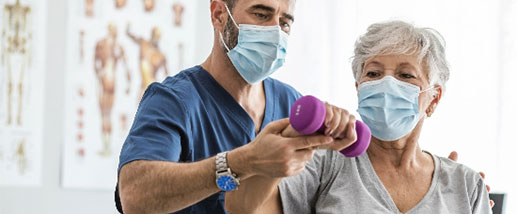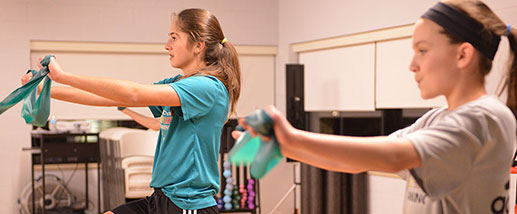If all of your blood vessels with arteries and veins were laid out in a line, they would measure more than 60,000 miles in length, according to the U.S. National Institute on Aging (NIA). Considering that the circumference of the Earth is approximately 24,873 miles, that means your blood vessels could circle the globe more than twice.
Your heart, arteries, and veins circulate blood throughout your body. Blood is pumped out from the heart through the arteries, which carries oxygen-rich blood to all of the important organs. Once nutrients are delivered, blood is carried back through veins to the lungs and heart, where it gets oxygenated again.
Problems with circulation can start at any age, but most commonly occur with smoking, diabetes, high cholesterol, chronic kidney disease, or being over the age of 50. These conditions accelerate the formation of plaque in arteries, otherwise known as atherosclerosis or peripheral arterial disease. This can lead to blood clots, stroke, heart attack, aneurysm formation, pain in the legs with walking, and trouble healing wounds.
Two vascular diseases that are prevalent among adults are highlighted below.
Peripheral Arterial Disease
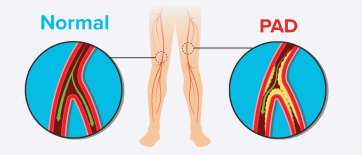
It is estimated that Peripheral Arterial Disease (PAD) — a common and underdiagnosed medical condition — affects five million adults annually in the U.S. As this condition progresses, the arteries become narrowed or completely blocked. It can happen in arteries throughout the body, but many people first start noticing symptoms in the legs.
Patients with PAD often experience leg cramping with walking (in one or both legs), or muscle weakness. Pain most commonly occurs in the buttock, thigh, or calf. The leg may also present with a cool skin temperature or darker changes in color. Wounds on the feet that don’t heal are often another sign of PAD. When blood isn’t able to be delivered to the tissues adequately, this can even lead to tissue death and gangrene.
Vascular surgeons can treat PAD with effective interventions that are often minimally invasive, and open blockages in arteries to increase blood flow. This results in relief of pain, healing of wounds, and restoration of normal blood flow.
Venous Disease (Varicose & Spider Veins)
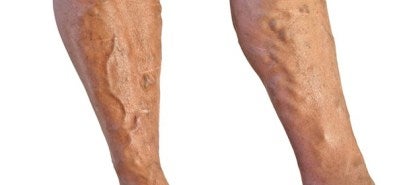
Veins are blood vessels with thin walls and valves inside that help to bring blood back to the heart against gravity. It is estimated that 40 percent of adults in the U.S. have venous insufficiency, a common condition which leads to varicose veins. When these valves are stretched out and don’t work as well, blood pools and strains the walls, leading to formation of varicose veins.
This condition very commonly runs in families, and also is more common with pregnancy, obesity, and natural wear and tear over time. While having varicose veins isn’t a dangerous medical condition, they can cause symptoms in the legs such as aching and throbbing discomfort, swelling, restless legs, and sometimes leads to increased pressure and wounds that don’t heal.
Vascular surgeons offer minimally invasive office-based treatments that get rid of the varicose veins and greatly improve a person’s quality of life. Spider veins are common as well, and cosmetic treatments are available that help them fade in appearance.
By maintaining a healthy lifestyle and developing good habits, you can help prevent and lower your risk of vascular diseases. A healthy lifestyle includes the following:
- No smoking
- Physical activity to keep blood circulating
- Healthy diet and hydration to lower cholesterol and prevent blood clots
- Wearing compression stockings for varicose veins
- Annual wellness visit with your primary care doctor to talk about any concerns
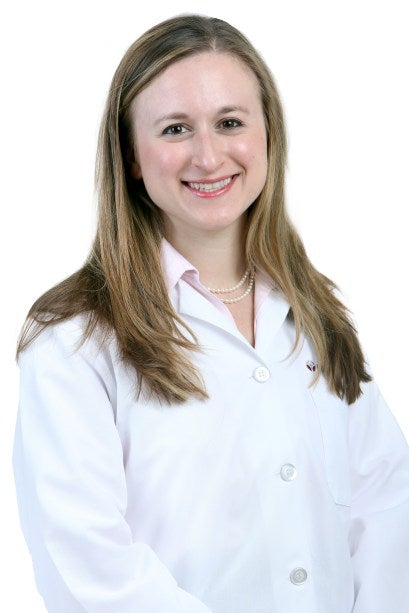
Vascular Surgeon Michelle Kosovec, MD, from Mercy Health Physician Partners Vascular and Vein Specialists, further explains: “Smoking is the number one reason why people develop major vascular blockages and trouble with circulation. It not only causes a more rapid buildup of plaque in arteries at a much younger age, but it also greatly reduces the ability of people to have a normal quality of life. People will commonly present with a heart attack or stroke, have trouble walking, and are at a significantly increased risk of developing blood clots, aneurysms, and other very serious conditions. Those who smoke often don’t think that these problems will happen to them. If you do smoke, it is extremely important that you have a medical professional evaluate your vascular health. And talk with your doctor to get help to quit.”
To schedule a consultation with Mercy Health Physician Partners Vascular and Vein Specialists call 616-685-7850 or ask your doctor for a referral.

